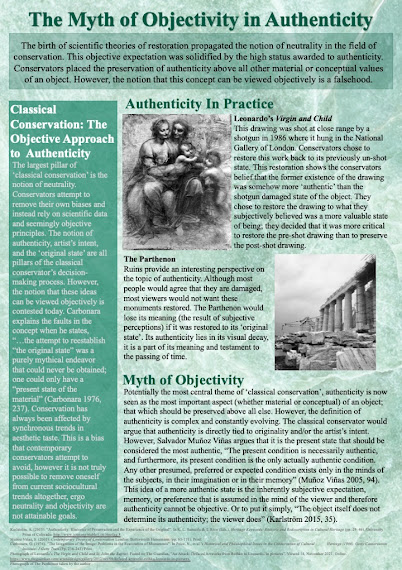This poster explains the meaning of value-led conservation, breaking this term into easy-to-understand sections. Featuring a case study by the Pitt Rivers Museum that outlines the conservation process of Sacred Blackfoot Shirts. I have highlighted why the value-led conservation process is important to follow in the field of conservation.












